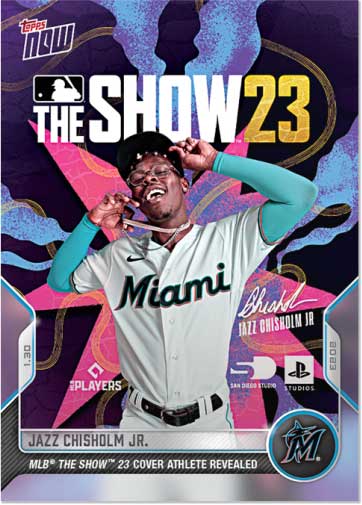
How Series 1 Makes History
The oldest baseball card on record was produced by New York-based studio Farach & Lalumia, and it depicts the Brooklyn Atlantics, pioneers in the game’s first organized league. It was printed before the Civil War, back when “base ball” was two words. It predates Topps by about 80 years.
In subsequent decades, tobacco companies led the way in the card game, slipping the cardboard collectibles inside packages of their products to attract new customers and retain existing ones — that’s how the famous T206 Honus Wagner came to be. Indeed, the earliest history of baseball cards doesn’t include Topps at all.
But that’s about where the separate histories end. Because ever since the company started making cards in 1949, “Topps” and “baseball cards” have been nearly synonymous. From its early roots to its unquestioned status as an industry leader today, Topps has always shown forward-looking bona fides; Its flagship product, Series 1, embodies this.
Scoring Early Runs
The funny thing is that Topps, always at the forefront of baseball cards, never really set out to be part of that industry in the first place. When it was founded in 1938, Topps made chewing gum; when the company started producing cards about a decade later, it was just a marketing strategy to sell more gum. That strategy was hugely innovative when tobacco companies started doing it at the turn of the 19th century. Topps carried that flag, putting its own legendary spin on the genre.
The release of the landmark 1952 Topps Baseball set, the brainchild of executive Sy Berger and graphic artist Woody Gelman, changed the game forever. Before that point, most baseball cards were printed black-and-white, and very few players even smiled. Berger’s cards were approachable, colorful, and informative, unlike anything before them. Kids across America couldn’t get enough of the cards, which laid the foundation for collecting as we know it today.
“Never in a million years did any of us think that baseball card collecting would become such a big part of popular American culture,” said Berger before his 2014 passing in an interview with writer Scott Pitoniak. “But it did. And Topps quickly adjusted their focus.”
Since then, Topps’ annual Series 1 has been on the cutting edge of baseball and card collecting. Rookie cards have always been a chance to show off the game of tomorrow. And some of its annual sets, including the outlandishly bold-colored backgrounds of 1975 and the iconic wood paneling of 1962, are pillars of 20th-century American graphic design.
Always Innovating
Despite its status as the oldest cardmaker still in the game today, Topps continues to push the industry forward with innovative advancements across the board.
Traditional cardboard will always hold a special place in collectors’ hearts, but exciting printing advancement drives the modern hobby. That belief has been part of Topps’ ethos for years. In 1993, the company invented Refractor cards featuring reflective coatings that give them a bold, iridescent look. Topps Chrome, an upscale product line printed on premium metallic chromium paper, has been beloved since its debut in 1996. The company continues to push the envelope in the present day — one of 2023 Series 1’s inserts, “Heavy Lumber,” features the game’s biggest hitters printed atop fine sheets of cherrywood.
But it’s more than modern printing that allows Topps to stay ahead of the curve; Topps is changing the way fans collect cards at the core. Topps Now, a print-on-demand product that commemorates the biggest moments in the game as they happen, has captured over 10,000 snapshots of baseball since the line’s debut in 2016.
For example, this card marking Jazz Chisholm’s MLB The Show 23 cover was released right after the announcement was made in January, and sales were live only for the following day.
Meanwhile, Project100 is giving some of the world’s most talented designers a chance to create a set of 100 cards that range in style for a diverse, premium art collection.
To Be Modern Is Not a Fashion
Baseball cards have always been contemporary — they’re not just a part of modern culture; they inform modern culture.
They reflect cultural moments, and today, they do it in real time. For nearly 75 years now, collecting baseball cards has been as American an activity as a big slice of apple pie on the 4th of July.
Topps has been at the forefront of that movement, rewriting modern culture one small piece of cardboard at a time.
